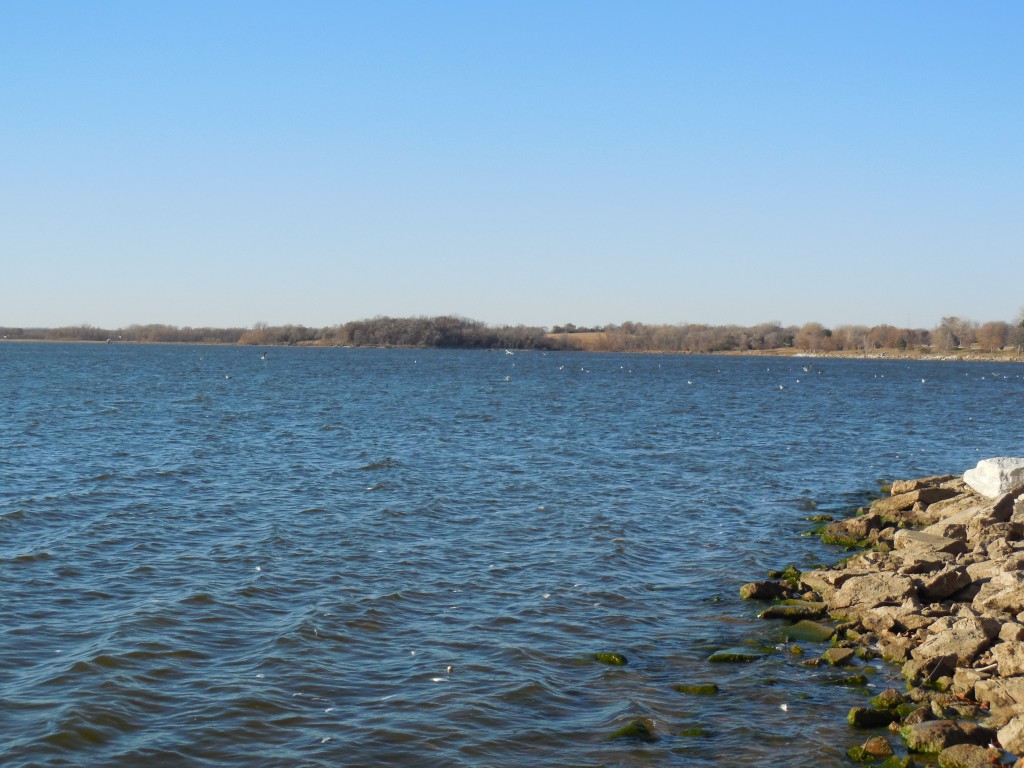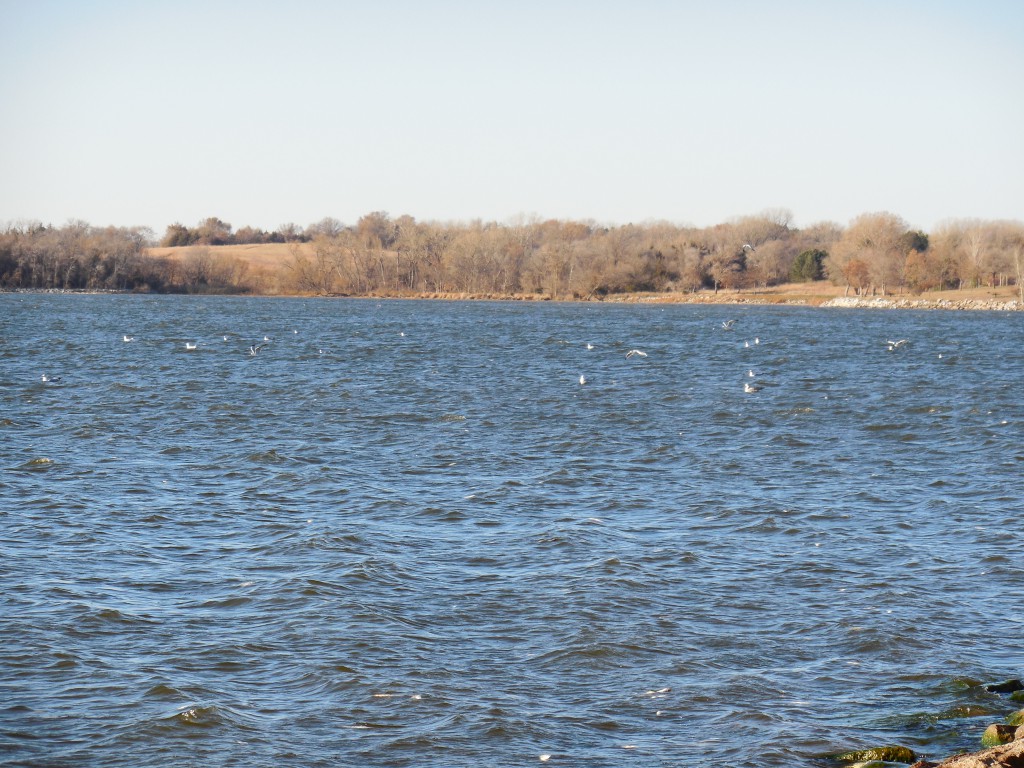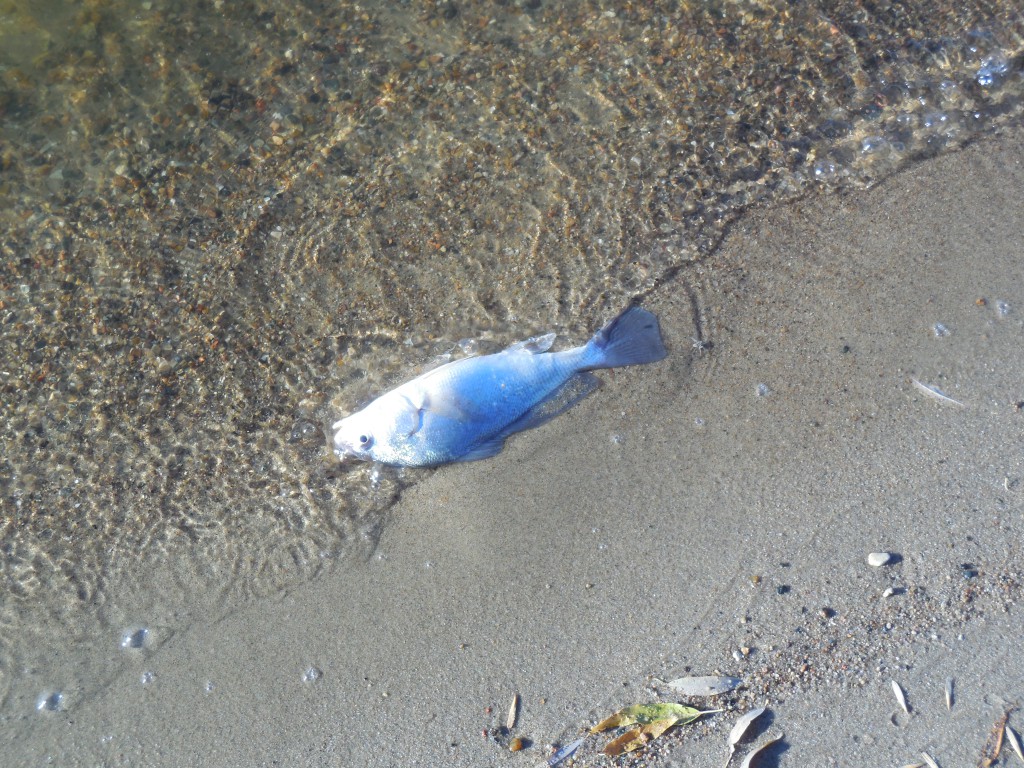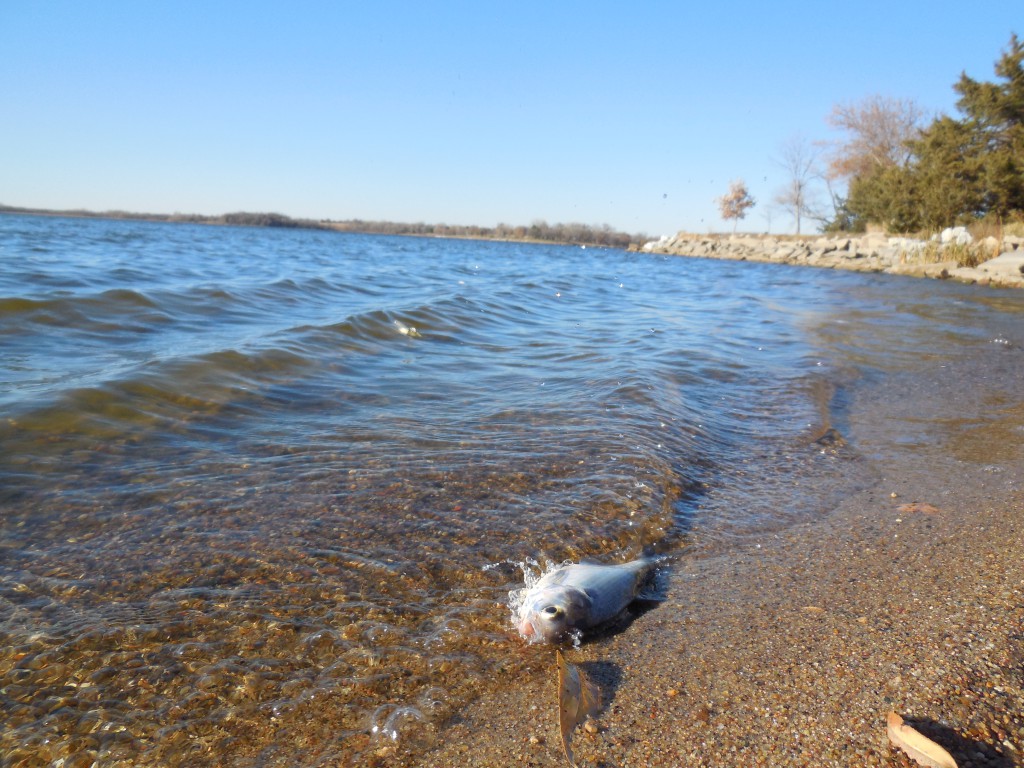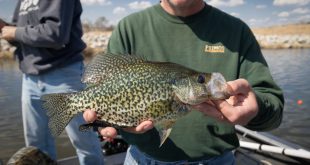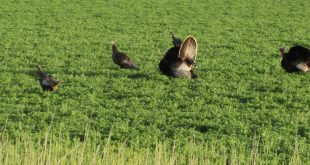A few weeks ago there was a news release about a fisheries management project being conducted at Pawnee Reservoir west of Lincoln:
LINCOLN – A chemical was applied at Pawnee Lake in an attempt to remove unwanted white perch and gizzard shad from the fish population, according to the Nebraska Game and Parks Commission.
Rotenone typically is used to eliminate all fish from a body of water; however, a lower concentration of the chemical was applied Nov. 12-13 at Pawnee Lake. The chemical was applied in locations where white perch and gizzard shad, which compete with young sport fish, were concentrated.
While some loss of desirable fish was expected, additional predator fish will be stocked in Pawnee next spring to increase future predation on white perch and gizzard shad. Fish killed by rotenone are not approved for human consumption.
News releases by their nature are short and to the point. I want to expand on this a bit and explain exactly what we hope to achieve at Pawnee.
There are several species of fish that, depending on the body of water and management objectives, can be detrimental to a fishery. White perch are high on that list as well as species such as common carp. Many times the easiest way to manage those species is to eliminate all fish and start over re-stocking desirable species of fish. Usually when fisheries managers “renovate” a fishery that is what they are referring to–the elimination of all fish. I have blogged about a complete renovation and how that is done before, Rotenone Renovation, Willow Lake Renovation.
The fish toxicant rotenone was used at Pawnee Reservoir this fall, but in this case instead of trying to eliminate all fish, the goal was to eliminate white perch and gizzard shad. How can that be done? How can rotenone be used to selectively remove only certain fish? Well, that theoretically is possible because different species of fish have different tolerances to rotenone. Rotenone is a natural chemical produced by the roots of certain South American plants. It kills fish not by coating the gills but by preventing the metabolism of oxygen at the cellular level. Some species of fish like black bullheads and common carp will die when concentrations of rotenone are relatively high while species such as gizzard shad begin to die as soon as they see the barrels of rotenone rolled down a boat ramp. In the late fall and winter, gizzard shad and white perch are stressed by cold water temperatures to begin with, and then, in theory, adding a low dose of rotenone on top of that should finish them off.
The goal of the low-dose rotenone treatment at Pawnee Reservoir this fall was to knock off as many white perch as possible. Gizzard shad are not necessarily bad for a fishery, especially large reservoir fisheries, but when there are gizzard shad present in a reservoir like Pawnee, predator fish that could be utilizing white perch would rather prey upon slimy, soft-rayed, fat, oily gizzard shad. Predators are more likely to manage white perch numbers in a body of water when gizzard shad are absent. The more white perch and gizzard shad eliminated from Pawnee, the greater the potential for that fishery in the coming years.
Now you may have noticed my use of the word “theory” a couple of times. Fisheries managers frequently employ rotenone to completely renovate fisheries and eliminate all fish. However, the use of low doses of rotenone to target only certain species has not been used as much. A low-dose rotenone treatment on a private Nebraska pit was very successful in eliminating gizzard shad and white perch a year ago, but the larger operation on Pawnee Reservoir has a lot more variables and uncertainties. How effective will the treatment be on the target species and how much “collateral damage”, mortality of desirable species, will there be? Those will be the major questions as we follow this treatment through the winter and on into next spring.
An inside joke among many of my fellow pointy-headed fisheries biologists about several things we do is that “timeliness and distribution” are critical. That was especially critical when trying to evenly apply a specific low dose of rotenone over an entire 740-acre reservoir. Several crews operating several boats applied rotenone both shallow and deep.
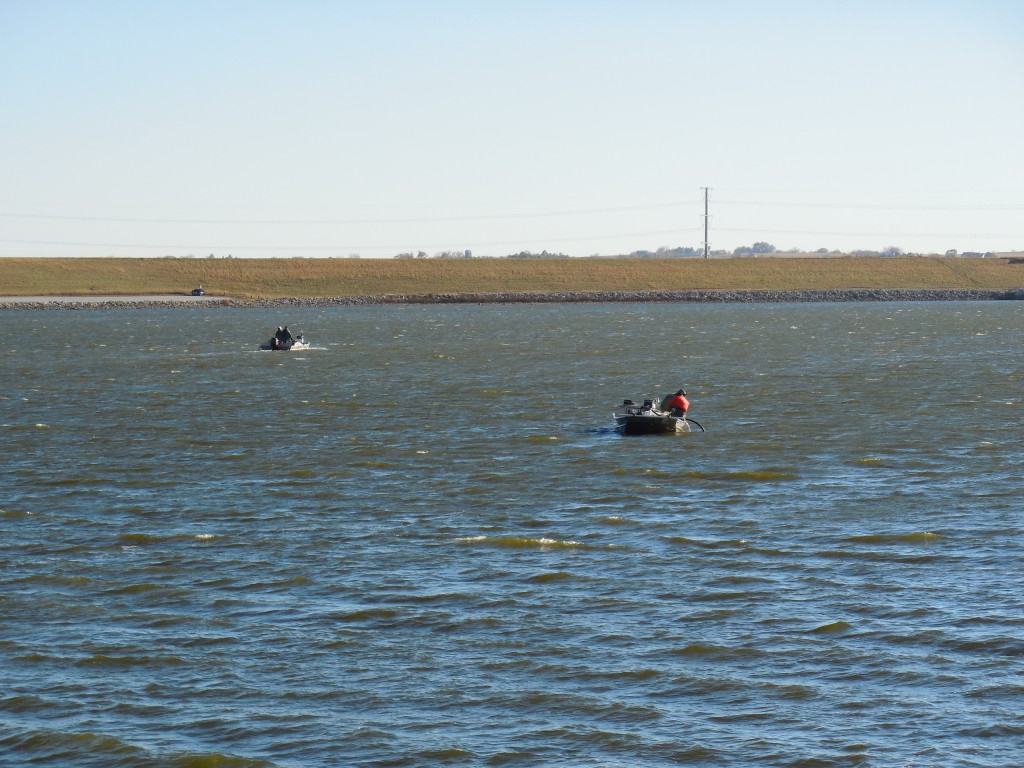

I said earlier that gizzard shad are very susceptible to rotenone. They started perishing right away.
The gulls thought that was great!
I have heard the eagles took advantage of it too, Enjoy your Thanksgiving Eagles. (I hope I do not burst any bubbles here, but that great, fierce bald eagle we have as a national symbol is a really good scavenger too.)
One question we have is how many other non-target fish will be killed in this treatment? We expect that mortality might be significant for some species including walleyes and flathead catfish. Believe me, we do NOT want that in this case and have tried to minimize the potential of killing those species, but we do not know for sure. We do not know the impacts on desirable sport fish at this time and we likely will not have a real picture of those impacts until next spring or even next fall. I can tell you that in the brief time I was out at Pawnee while the treatment was underway, I saw lots of dead gizzard shad and some white perch.
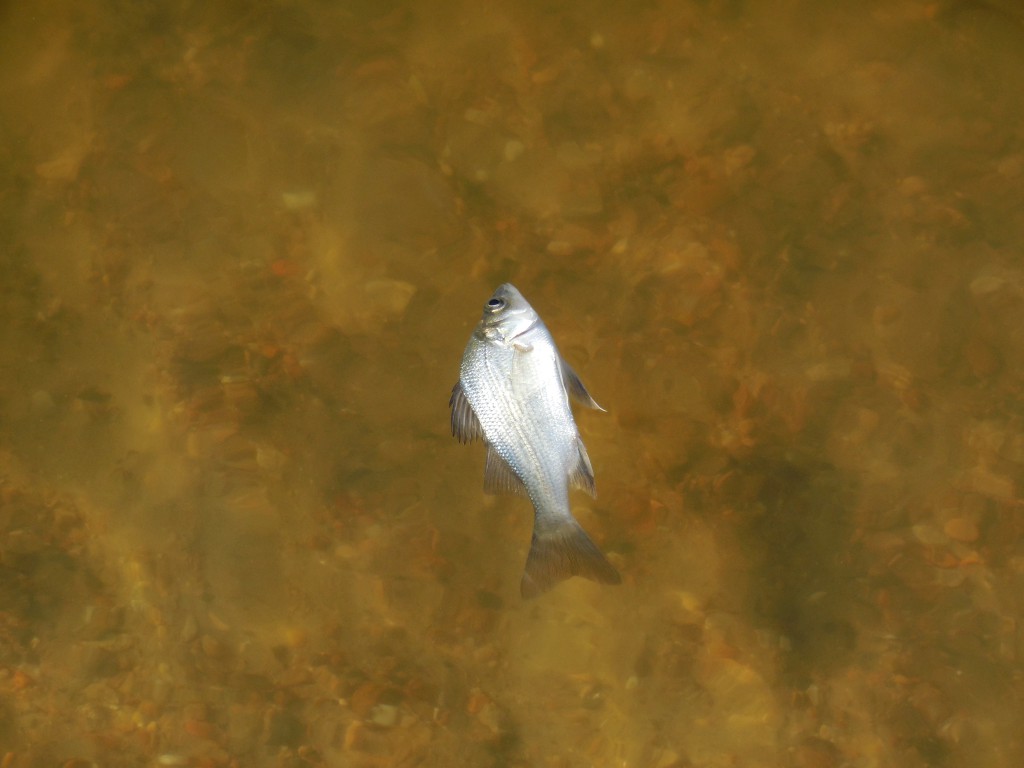
We also noticed significant mortality of freshwater drum.
Now fisheries biologists will tell you that fish removal projects, unless they are complete removals or as close as possible to complete removals, are seldom successful. The fact of the matter is that unless you do a complete renovation there will be some undesirable species survive and those survivors will quickly repopulate. In fact by their nature, the undesirable species take advantage of ecological voids faster than more desirable sport fish species. However, again in theory, a fish removal project could be successful if it is employed in conjunction with additional predators and perhaps additional protection of predator fish. I can tell you that additional stockings of predator fish like walleyes and perhaps even northern pike and largemouth bass is planned for Pawnee next spring.
Fisheries science is an active, progressive science. Fisheries managers are always looking for new tools and new ways to develop and maintain quality fishing. White perch have been a management issue for Salt Valley reservoirs in Nebraska for a long time now, and they ain’t going to go away. Complete renovations could be done on 740-acre reservoirs like Pawnee, but with the high use and likelihood of white perch re-invasion we are looking for better ways to manage white perch. There are no guarantees that any fisheries management activities will be successful and produce the results, great fishing, that we all hope for. There will be some successes and some failures. But we ain’t about to give up!
And now you know the rest of the story.
 Nebraskaland Magazine
Nebraskaland Magazine
